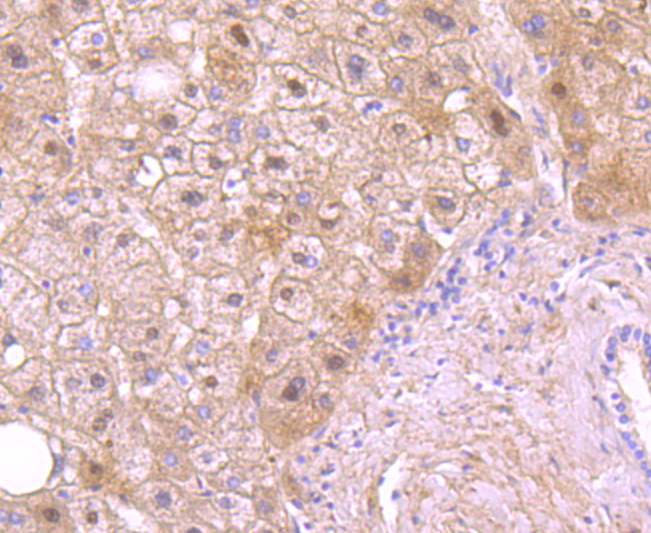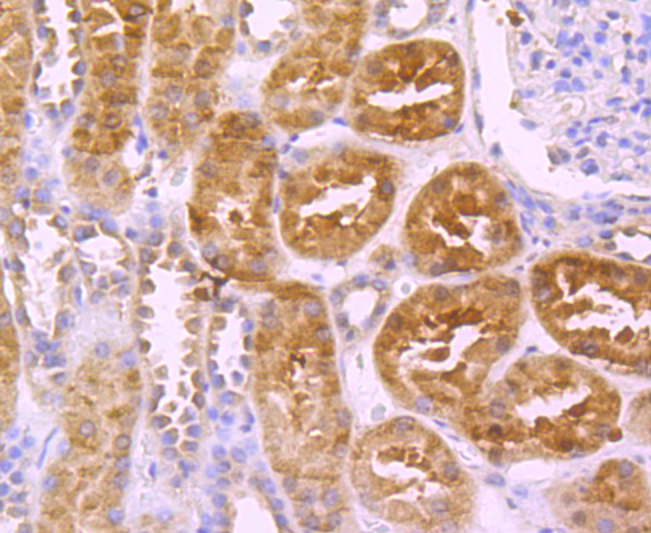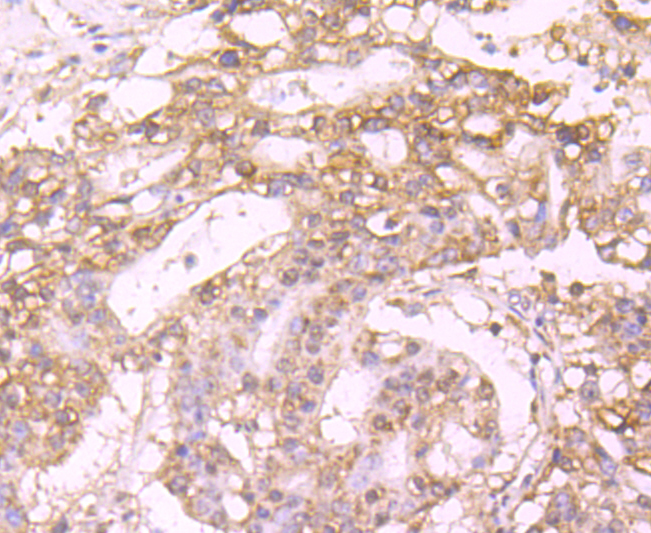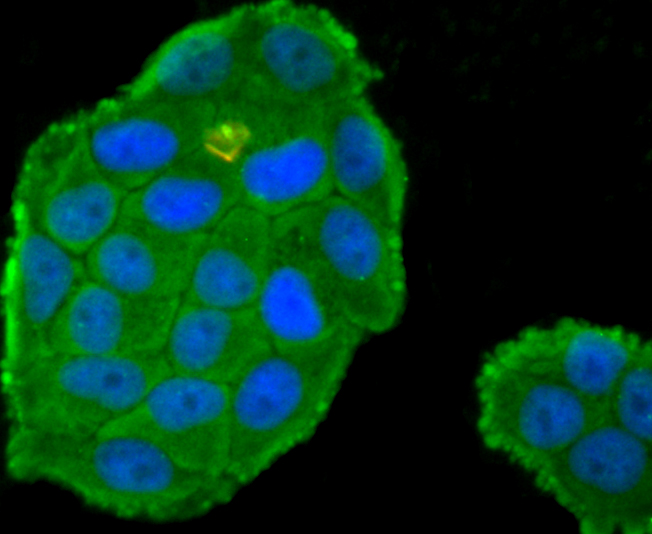Product Detail
Product NameProtein C Rabbit mAb
Clone No.JM93-61
Host SpeciesRecombinant Rabbit
Clonality Monoclonal
PurificationProA affinity purified
ApplicationsWB, ICC, IHC
Species ReactivityHu
Immunogen Descrecombinant protein
ConjugateUnconjugated
Accession NoSwiss-Prot#:P04070
Uniprot
P04070
Gene ID
5624;
Calculated MW52 kDa
Formulation1*TBS (pH7.4), 1%BSA, 40%Glycerol. Preservative: 0.05% Sodium Azide.
StorageStore at -20˚C
Application Details
WB: 1:500
IHC: 1:50-1:200
ICC: 1:50-1:200
Immunohistochemical analysis of paraffin-embedded human liver tissue using anti-Protein C antibody. Counter stained with hematoxylin.
Immunohistochemical analysis of paraffin-embedded human kidney tissue using anti-Protein C antibody. Counter stained with hematoxylin.
Immunohistochemical analysis of paraffin-embedded human stomach cancer tissue using anti-Protein C antibody. Counter stained with hematoxylin.
ICC staining Protein C in Hela cells (green). The nuclear counter stain is DAPI (blue). Cells were fixed in paraformaldehyde, permeabilised with 0.25% Triton X100/PBS.
ICC staining Protein C in 293T cells (green). The nuclear counter stain is DAPI (blue). Cells were fixed in paraformaldehyde, permeabilised with 0.25% Triton X100/PBS.
Protein C is a vitamin K-dependent plasma protein that is produced in the liver and made up of two polypeptide chains. It is an important anti-coagulant activated by Thrombin bound to an endothelial surface receptor and it enzymatically cleaves activated forms of Factors V and VIII, dest? inflammatory blood coagulation. Protein C is similar to the prothrombin group of blood coagulation factors in its primary structure. Normal protein C concentration in human plasma is approximately 1-3 ng / ml and the proenzyme concentration is approximately 3 μg / ml. Protein C deficiency is associated with inherited thrombophilia, a rare genetic disorder that predisposes affected individuals to venous thrombosis and habitual abortion.
If you have published an article using product 49622, please notify us so that we can cite your literature.







 Yes
Yes



